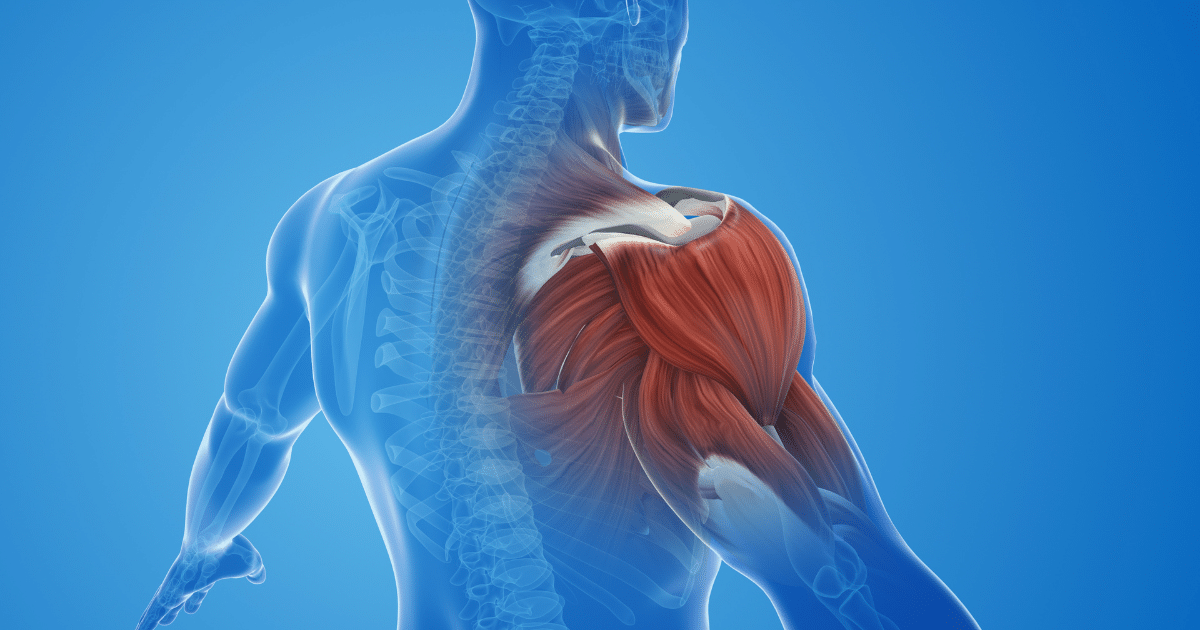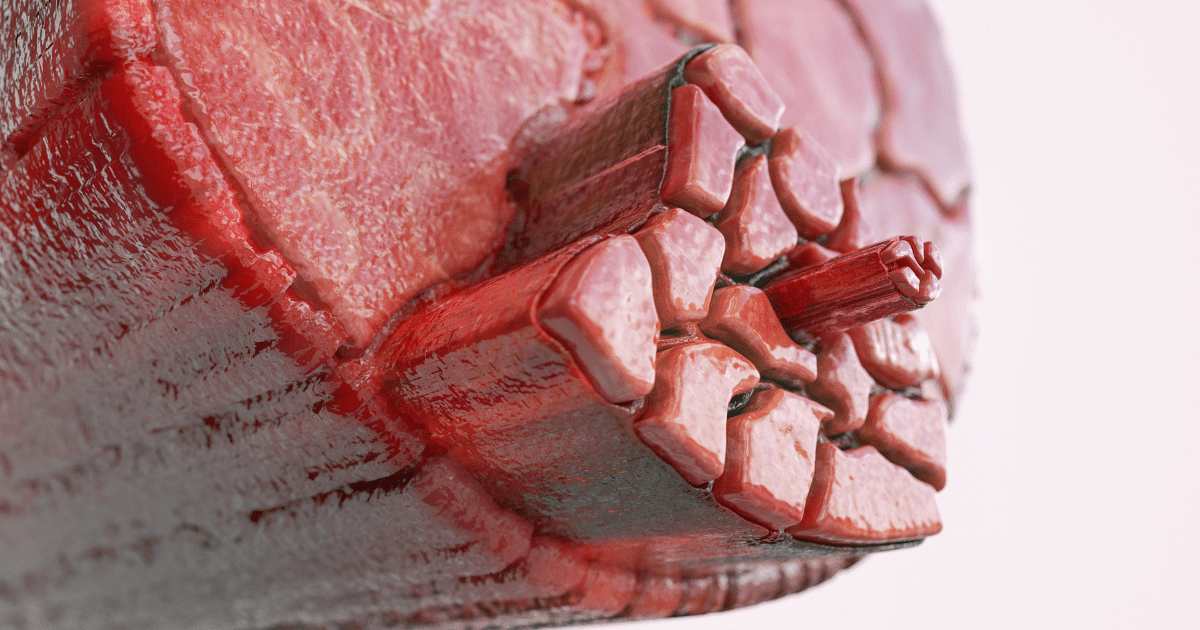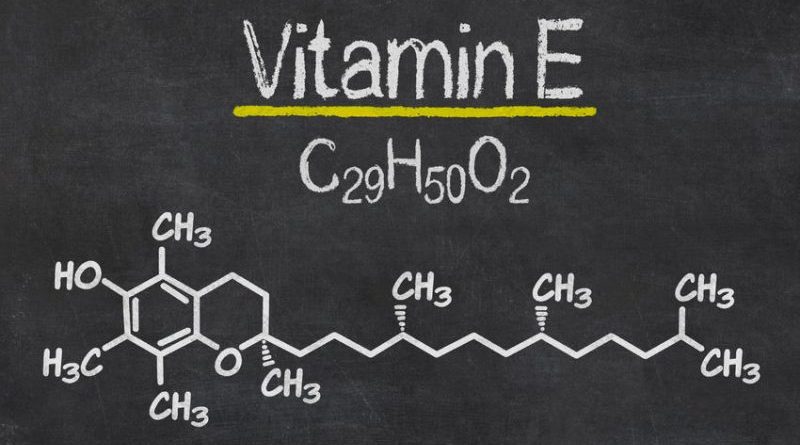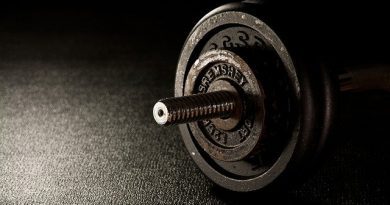Vitamin E May Help Reduce Muscle Damage
Vitamin E is commonly found in many men’s multivitamins found on the store shelves these days. It’s also called d-Alpha Tocopheryl Acetate. There are many reasons that we should be supplementing with this vitamin, such as preventing and minimizing many health issues and illnesses, but also improving physical endurance, increasing energy levels, and now thanks to recent research, improving muscle strength and reducing muscle damage.
Table of contents
Disclaimer: This article is for informational purposes only and is not meant to treat or diagnose any condition. It is recommended that you speak with your doctor before starting any exercise program, changing your daily nutrition, or adding any supplements to your regimen.
What is Vitamin E?

Vitamin E is a fat-soluble vitamin that plays a crucial role as an antioxidant in the human body. It exists in several forms, with the most biologically active form being alpha-tocopherol. Antioxidants help protect cells from damage caused by free radicals, which are highly reactive molecules produced during normal metabolism and in response to environmental factors such as pollution and ultraviolet (UV) radiation.
Key functions and benefits of vitamin E include:
- Antioxidant Protection: Vitamin E helps protect cells from oxidative stress by neutralizing free radicals. This can contribute to the prevention of chronic diseases and aging-related conditions.
- Immune System Support: Vitamin E plays a role in supporting the immune system, helping the body defend against infections and illnesses.
- Skin Health: The antioxidant properties of vitamin E make it beneficial for skin health. It is often included in skincare products and supplements to help maintain healthy skin and prevent damage from UV rays.
- Heart Health: Some studies suggest that vitamin E may have a positive impact on heart health by preventing the oxidation of low-density lipoprotein (LDL) cholesterol, commonly referred to as “bad” cholesterol.
- Anti-Inflammatory Effects: Vitamin E may have anti-inflammatory effects, which can be beneficial in managing certain inflammatory conditions.
Sources of vitamin E include nuts, seeds, vegetable oils (such as sunflower oil and wheat germ oil), green leafy vegetables, and fortified foods. While vitamin E is essential for health, it’s important to consume it as part of a balanced diet, as excessive intake through supplementation may have adverse effects.
What is Muscle Damage?

Muscle damage refers to the structural and functional disruption of muscle fibers, which are the individual cells that make up skeletal muscles. This damage can occur as a result of various factors, such as intense physical exercise, trauma, or certain medical conditions. The extent of muscle damage can range from microscopic tears to more severe injuries.
One common context in which muscle damage occurs is during strenuous physical activity or exercise. This type of damage is often associated with the term “muscle soreness” and is known as delayed onset muscle soreness (DOMS). DOMS typically occurs 24 to 48 hours after intense or unfamiliar exercise and is characterized by pain, stiffness, and tenderness in the affected muscles.
The process of muscle damage during exercise involves several factors:
- Mechanical Stress: Intense or eccentric (lengthening) contractions during exercise can cause mechanical stress on muscle fibers, leading to microscopic damage.
- Inflammatory Response: The damaged muscle fibers trigger an inflammatory response. Inflammation is a natural part of the healing process and involves the release of various substances, including cytokines and white blood cells, to repair the damaged tissue.
- Repair and Regeneration: Muscle fibers undergo a repair and regeneration process, where damaged cells are replaced by new muscle tissue. This process can lead to the adaptation and strengthening of the muscle.
While some degree of muscle damage is a normal and necessary part of the muscle adaptation process, excessive or repeated damage without adequate recovery can contribute to overtraining and potential injuries.
Proper recovery strategies, such as rest, hydration, nutrition, and gradual progression in exercise intensity, can help minimize muscle damage and promote optimal muscle adaptation. Additionally, incorporating stretching and warm-up activities before exercise may help reduce the risk of injury and excessive muscle damage.
How Do You Prevent Muscle Damage from Happening?

While it’s not possible to completely prevent all muscle damage, there are strategies to minimize the risk of excessive damage, promote efficient recovery, and reduce the likelihood of injury. Here are some tips to help prevent muscle damage:
- Gradual Progression: Avoid sudden and drastic increases in exercise intensity, duration, or load. Gradually progress your workouts to allow your muscles to adapt to increased demands over time.
- Proper Warm-Up: Always warm up before engaging in intense physical activity. A proper warm-up increases blood flow to the muscles, enhances flexibility, and prepares the body for the upcoming exercise session. Include dynamic stretches and light aerobic activity in your warm-up routine.
- Balanced Exercise Routine: Incorporate a variety of exercises that target different muscle groups and movement patterns. This helps distribute the workload across various muscles and reduces the risk of overloading specific areas.
- Adequate Rest and Recovery: Allow sufficient time for rest and recovery between intense workouts. Overtraining can increase the risk of muscle fiber damage and hinder the body’s ability to repair and adapt.
- Proper Nutrition: Maintain a well-balanced diet that provides essential nutrients, including proteins, carbohydrates, fats, vitamins, and minerals. Proper nutrition supports muscle recovery and helps prevent nutritional deficiencies that may contribute to muscle damage.
- Hydration: Stay adequately hydrated before, during, and after exercise. Dehydration can negatively impact muscle function and increase the risk of cramps and injury.
- Post-Exercise Stretching: Include static stretching as part of your cool-down routine after exercise. Stretching can help improve flexibility, reduce muscle stiffness, and promote blood circulation.
- Cross-Training: Engage in a variety of physical activities to reduce the repetitive stress on specific muscles and joints. Cross-training can provide a well-rounded approach to fitness and lower the risk of overuse injuries.
- Listen to Your Body: Pay attention to your body’s signals. If you experience persistent pain, fatigue, or signs of overtraining, consider adjusting your workout intensity or taking additional rest days.
- Professional Guidance: Consult with fitness professionals, such as personal trainers or physical therapists, to ensure that your exercise program is well-designed and tailored to your individual needs and abilities.
It’s important to note that some degree of muscle damage is a normal part of the adaptation process, especially during strength training or new, challenging exercises. However, by adopting these preventive measures, you can help manage the risk and promote overall muscle health.
Muscle Fiber Damage Study
There are many reasons why we could suffer from muscle damage. It can be anything from free radical damage to muscle-wasting diseases such as muscular dystrophy. Deficiencies in this vitamin specifically have also been found to cause muscle weakness.

The State University of Campinas in Sao Paulo, Brazil conducted a study looking at the benefit of Vitamin E to help reduce muscle damage in mice. One researcher mentioned, “The use of antioxidants as a therapeutic agent has recently gained renewed interest. Several studies have demonstrated positive outcomes regarding some diseases such as cardiovascular disease, atherosclerosis, allergic disease, neuromuscular disease, and muscular dystrophies.”
For this study, researchers took mice and had a control group that received saline, and a second group which they bred to mimic humans with muscular dystrophy which were given 40mg/kg of oral Vitamin E. Each group was given their respective dosages for a total of 14 consecutive days.
Following the study, the mice were tested for different markers such as muscle fiber degeneration and inflammatory responses along with drawing blood samples from both groups.
Related Article: The Health Benefits of Vitamin E Supplementation
When looking at the results, the mice who were given the vitamin supplement were found to have increased membrane repair, decreased molecular inflammation, as well as lower levels of creatine kinase which is used to indicate if there is an increase in muscle fiber wasting and breakdown.
From this finding, one researcher said, “Vitamin E partitions into the hydrophobic core of the plasma membrane bilayer, resulting in bilayer physical alterations such as fluidity, which increased at the bilayer surface of liposomes and decreased in the interior. Our research suggests that a Vitamin E antioxidant strategy adapted to start before the muscular degeneration cycles begin may be a relevant therapeutic approach for DMD disease.”
Click here to continue reading…


*Disclosure: This article may contain affiliate links or ads, which means we earn a small commission at no extra cost to you if you make a purchase through these links. These commissions help support the operation and maintenance of our website, allowing us to continue producing free valuable content. Your support is genuinely appreciated, whether you choose to use our links or not. Thank you for being a part of our community and enjoying our content.
PLEASE CONSIDER SHARING THIS ON YOUR SOCIAL MEDIA TO HELP OTHERS LEARN MORE ABOUT THIS TOPIC.





